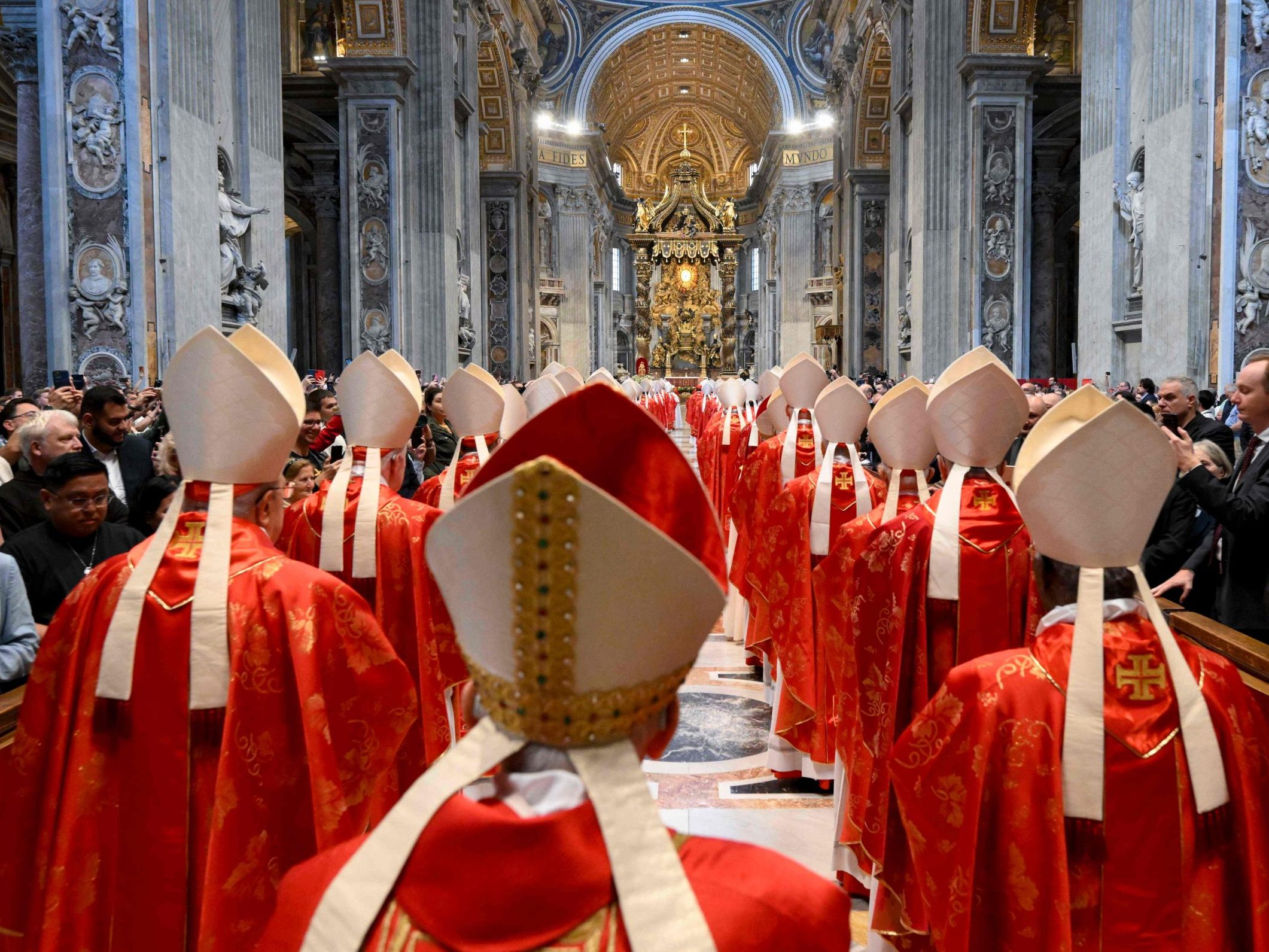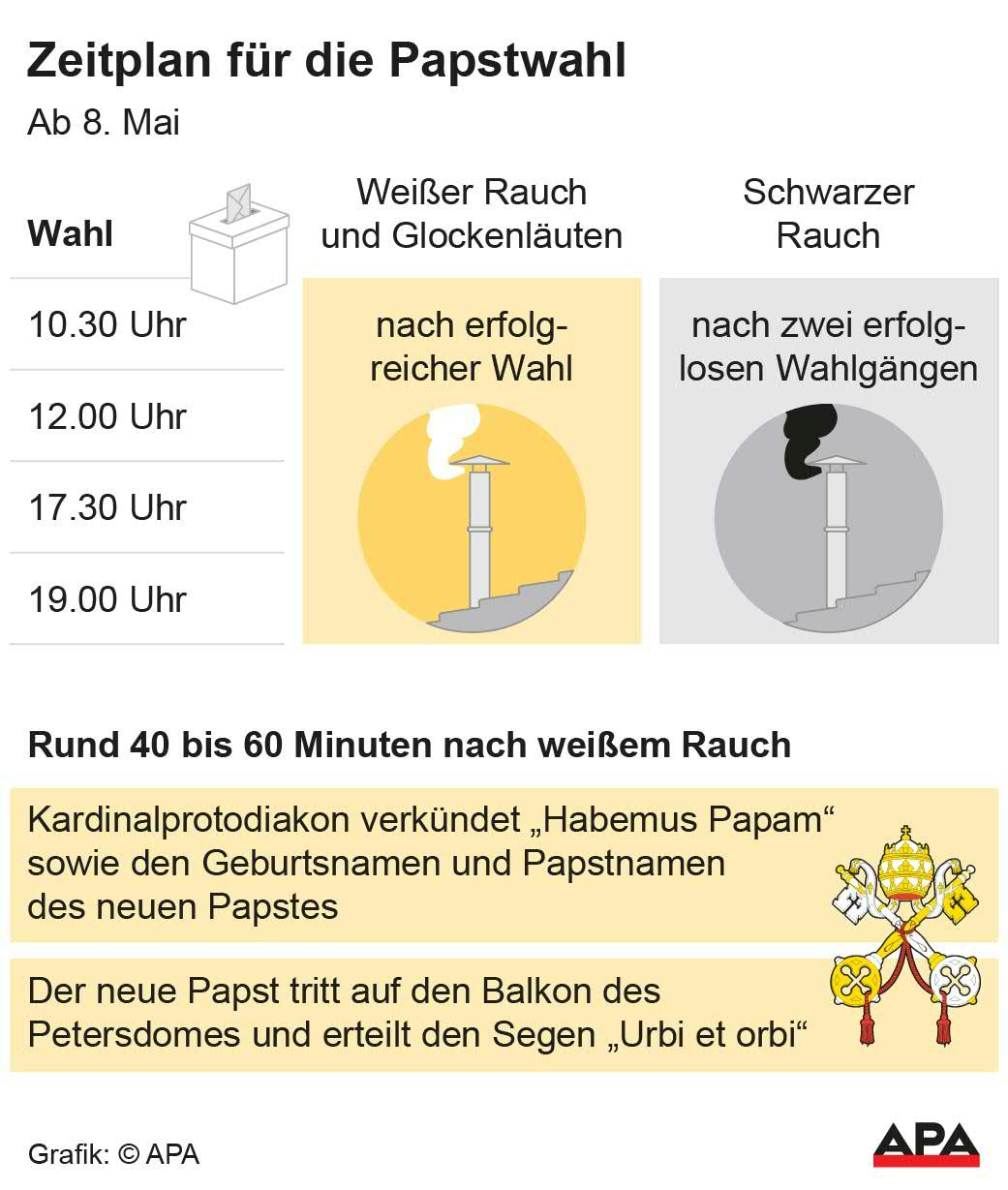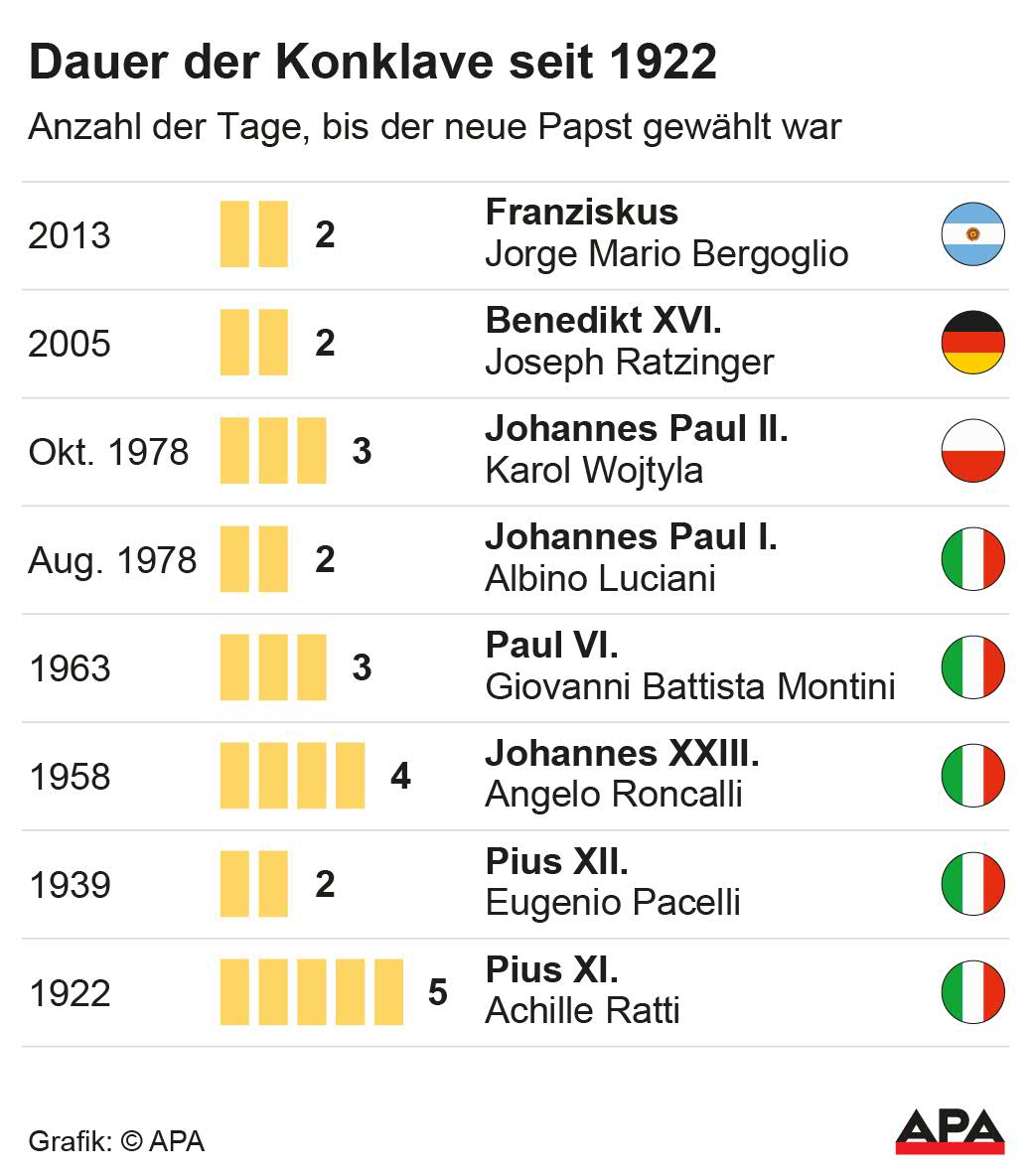Pope Election: Conclave Began with the Entry of the Cardinals into the Sistine Chapel

133 cardinals from various countries entered the Sistine Chapel in a solemn procession on Wednesday afternoon around 4:30 PM.
Papal Election: Entry and Oath of the Cardinals
The procession was led by a cross and candle bearers. They were followed by the singers of the Sistine Chapel as well as the confessors and ceremonial officers. After them, the cardinals entered. Upon their arrival in the papal election chapel, the papal electors first bowed before the altar at the front of the chapel with Michelangelo's "Last Judgment." Then they took their assigned seats along the side walls of the chapel. In front of each chair were the nameplate, a copy of the papal election regulations, and the liturgical book of the conclave.

After arrival, the oath formula was read, according to which all participants will observe the election regulations, maintain confidentiality, and obey the newly elected pope. Each cardinal then individually took the oath on the Gospel. Meanwhile, members of the Papal Family and high prelates of the Roman Curia followed the entry of the cardinals from the back of the chapel. They all had to leave the chapel after the call "Extra omnes" ("Everyone out!"). The doors of the Sistine Chapel were closed by Indian Cardinal George Jacob Koovakad.

The churchmen are not allowed any contact with the outside world during the days of the election, so they can make their decisions completely independently. Voting is done by ballot, requiring a two-thirds majority. Each cardinal receives a ballot with the inscription "Eligo in Summum Pontificem." Below, the voter writes the name of the person they wish to elect, in disguised but clear handwriting. The writing should be done secretly.
According to rank, the cardinals approach the altar with their hands visibly raised. There stands the ballot box covered with a plate. The cardinals place their doubly folded ballot with the oath formula on the plate: "I call upon Christ, who will be my judge, as a witness that I have elected the one whom I believe should be elected according to God's will." The ballot is then placed in the urn.
Mobile Network in the Vatican Shut Down During Papal Election
During the papal election beginning on Wednesday, the Vatican State will shut down all its mobile and telecommunications systems. From Wednesday at 3 PM until the official announcement of the election of a new pope from the balcony of St. Peter's Basilica, the network will remain out of service. This is to prevent any electronic communication, ensuring that the conclave proceeds under the strictest secrecy, as prescribed by canon law. The cardinals thus give up contact with the outside world. And this is not only during the voting sessions in the Sistine Chapel but also in their accommodation during the papal election, the Santa Marta guesthouse.
Believers and tourists gathered on St. Peter's Square on the first day of the conclave to witness the ancient ritual: If black smoke rises from the chimney of the "Sistina," no pontiff has been found yet. White smoke signals to the world that the Chair of Peter is occupied again. Additionally, the church bells in the Vatican will ring. As the first official act, a newly elected pope steps onto the loggia of St. Peter's Basilica and delivers the blessing "Urbi et Orbi" ("To the City and the World").
With a splendid mass in St. Peter's Basilica, the ceremony for the election of the new pope began at ten o'clock in the morning. Before cardinals and dignitaries from around the world, Cardinal Dean Giovanni Battista Re sought God's help in deciding on the next pontiff. "We are here to seek the assistance of the Holy Spirit, to implore his light and strength, so that the pope is elected whom the Church and humanity need at this difficult and complex turning point in history," Re declared in his sermon during the traditional solemn mass "Pro eligendo Pontifice" (for the election of the pope) before the start of the conclave.
Papal Election: Short Conclave Expected
A short conclave of only a few days is expected in the Vatican. Since the mid-19th century, a papal election has never lasted longer than five days (including the day of commencement). However, it is considered unlikely that the cardinals will decide in the first ballot on Wednesday afternoon, especially since a two-thirds majority of 89 votes is necessary.
For the following days, up to four ballots are scheduled at 10:30 AM, 12:00 PM, 5:30 PM, and 7:00 PM. If the required majority is not reached, black smoke rises. The ballots are then to be burned at 12:00 PM and 7:00 PM. To ensure the smoke is black, chemical additives are mixed in. White smoke - traditionally produced by adding damp straw - is the signal that the pontiff has been found.
Strict security measures are being taken by the Vatican and the city of Rome for the conclave. The area around the Vatican has been extensively cordoned off. The highest security measures also apply in the other three jubilee basilicas and especially in the Basilica of Santa Maria Maggiore, where Francis's tomb is located. It is expected that tens of thousands of believers will flock to St. Peter's Basilica to witness the announcement of the new pope's name. The controls at the entrance to St. Peter's Square are quite rigorous. 4,000 police officers are on duty.
(APA/Red)
This article has been automatically translated, read the original article here.





